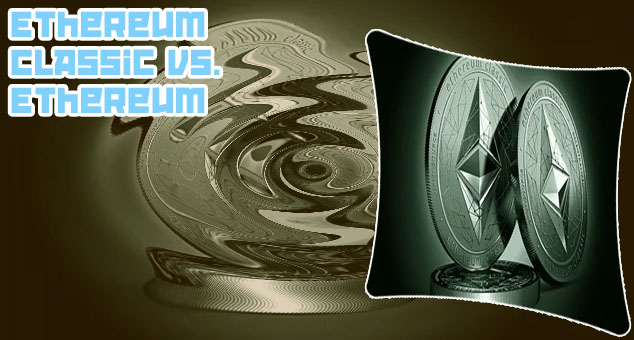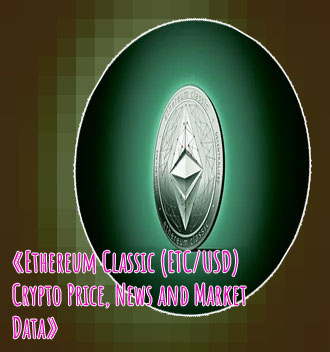Ethereum classic

Ethereum Classic has been gaining popularity as a decentralized platform for smart contracts and dApps. To better understand Ethereum Classic and its potential, we have curated a list of 4 articles that delve into various aspects of this cryptocurrency. From its history and development to its future outlook, these articles will provide valuable insights for anyone looking to learn more about Ethereum Classic.
The Origins of Ethereum Classic: A Brief History

Ethereum Classic, the result of a contentious hard fork in the Ethereum blockchain in 2016, has a rich history that is worth exploring. The origins of Ethereum Classic can be traced back to the infamous DAO hack, where a decentralized autonomous organization (DAO) was exploited, resulting in the loss of millions of dollars worth of Ether. This event led to a heated debate within the Ethereum community on how to handle the situation, ultimately resulting in a split between those who wanted to reverse the hack through a hard fork (resulting in Ethereum) and those who believed in the immutability of the blockchain and opted to continue the original chain (resulting in Ethereum Classic).
Key figures in the history of Ethereum Classic include Charles Hoskinson, one of the co-founders of Ethereum who later became a vocal supporter of Ethereum Classic, and Barry Silbert, the founder of Digital Currency Group who played a significant role in promoting Ethereum Classic. Places such as the Ethereum Classic Summit and the ETC Labs have also contributed to the development and growth of the Ethereum Classic ecosystem.
Despite the controversies and challenges it has faced, Ethereum Classic continues to thrive as a decentralized platform for smart contracts and dapps, offering a unique perspective on blockchain governance and immutability. Its history serves as a reminder
Exploring the Technology Behind Ethereum Classic
Ethereum Classic, a prominent blockchain platform, has been making waves in the world of cryptocurrency with its unique technology and features. This article delves into the inner workings of Ethereum Classic, shedding light on the technology that powers this innovative platform.
One of the key aspects of Ethereum Classic is its use of smart contracts, which are self-executing contracts with the terms of the agreement between buyer and seller directly written into lines of code. This feature enables users to automate various processes and transactions, reducing the need for intermediaries and streamlining the overall experience.
Another important technology behind Ethereum Classic is its consensus mechanism, known as Proof of Work. This mechanism ensures the security and integrity of the blockchain by requiring participants to solve complex mathematical puzzles in order to validate transactions. This process helps prevent fraud and unauthorized access to the network, making Ethereum Classic a secure and reliable platform for users.
In conclusion, Ethereum Classic's technology is at the forefront of innovation in the cryptocurrency space. By leveraging smart contracts and a robust consensus mechanism, Ethereum Classic offers users a secure and efficient platform for conducting transactions and executing contracts. For those interested in learning more about blockchain technology and cryptocurrency, exploring Ethereum Classic's technology is a must.
Recommendations:
- Dive deeper into the specifics of smart contracts and how they
Ethereum Classic vs. Ethereum: A Comprehensive Comparison
Ethereum Classic and Ethereum are two of the most well-known cryptocurrencies in the market today. While they may share a similar name, they have some key differences that set them apart.
One of the main differences between Ethereum Classic and Ethereum is their origins. Ethereum Classic is the original Ethereum blockchain that was created after a hard fork in 2016. On the other hand, Ethereum is the result of the hard fork, which was created to reverse the effects of a hack that occurred on the original Ethereum blockchain.
Another difference between the two cryptocurrencies is their approach to governance. Ethereum Classic operates on a more decentralized model, with decisions being made by the community through rough consensus. Ethereum, on the other hand, has a more centralized governance model, with decisions being made by a select group of developers and stakeholders.
In terms of market capitalization, Ethereum is currently the larger of the two cryptocurrencies, with a market cap of over 0 billion compared to Ethereum Classic's market cap of around p billion. This difference in market cap reflects the greater adoption and use of Ethereum compared to Ethereum Classic.
Overall, while both cryptocurrencies have their own strengths and weaknesses, Ethereum's larger market cap and more centralized governance model make it a more popular choice among investors and developers. However, Ethereum Classic's
The Future of Ethereum Classic: Opportunities and Challenges
Today, we have the pleasure of speaking with a blockchain expert about the potential for Ethereum Classic in the global market.
When asked about the opportunities for Ethereum Classic, the expert pointed out that its strong community support and robust technology make it a viable option for developers and investors. With its roots in the original Ethereum blockchain, Ethereum Classic offers a sense of stability and reliability that is attractive to many in the crypto space.
However, the expert also highlighted some of the challenges facing Ethereum Classic. One major obstacle is the competition from other cryptocurrencies, such as Ethereum itself. Additionally, the recent rise in hacking incidents and security breaches in the crypto world pose a threat to the reputation of Ethereum Classic.
Overall, the expert believes that Ethereum Classic has the potential to carve out its own niche in the market, but it will need to overcome these challenges in order to thrive in the long term.
This article is important for those interested in the future of Ethereum Classic, as it provides valuable insights into the opportunities and challenges facing the cryptocurrency.
Our Network
- Popular cryptocurrency
- Buy cryptocurency
- Will crypto bounce back
- Crypto pc
- Buy eth with btc
- Ethusd price
- How to buy dogecoin stock on coinbase
- Ethereum crypto
- Where to buy crypto
- Crypto earn
- Why buy bitcoin
- Hex crypto price
- Will ethereum ever reach $10 000 in price
- One usd crypto
- Buy bitcoin cash
- Surge crypto
- Lucky block crypto
- Cryptocom cards
- How many btc are there
- Buy sand crypto
- Bitcoin trend
- Icp cryptocurrency
- Etc crypto
- Where to buy bitcoin
- Crypto number
- Buy crypto with credit card
- Crypto com referral
- Cryptocurrency bitcoin price
- Largest bitcoin holders
- Btc live price
- Crypto predictions
- How to withdraw money from cryptocom
- How to use crypto
- Cryptocurrency exchanges
- Weth crypto
- Cryptocom headquarters
- Mbtc to usd converter
- Btc value usd
- Apps cryptocurrency
- How much is 1eth
- How much is bitcoin
- Doge crypto
- The price of bitcoin today
- Best way to buy crypto
- Crypto com exchange usa
- Ada crypto price
- Lightcoin price usd
- Cryptocom login
- Cryptos
- Btc to dollar
- Crypto com wikipedia
Our Network
- Iotex crypto news
- How much is 16 bitcoins worth
- Dogecoin difficulty
- Ethereum apy
- Fox finance crypto
- Refinable crypto
- Bitcoin crash binance
- Where to buy emax crypto
- Is cryptocom safe
- Crypto login
- Where to buy altura crypto
- Saturna crypto
- Eth gas tracker
- Btc usdt
- Crypto glitch
- Bitcoin profit
- Foxboy crypto price
- Bitcoin gold
- Eth fees
- Whitepaper crypto
- Flm crypto price